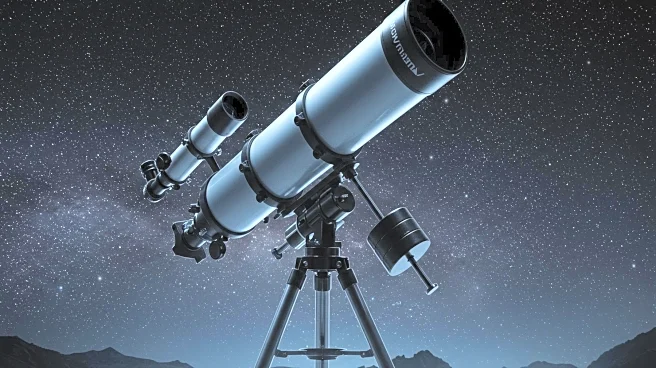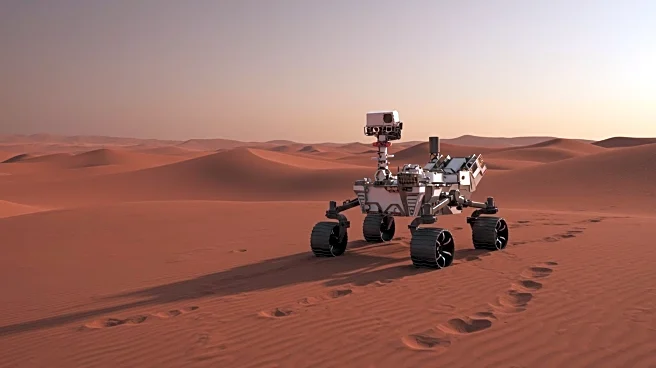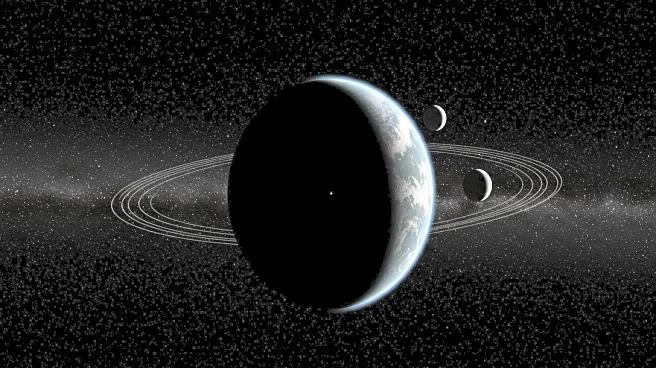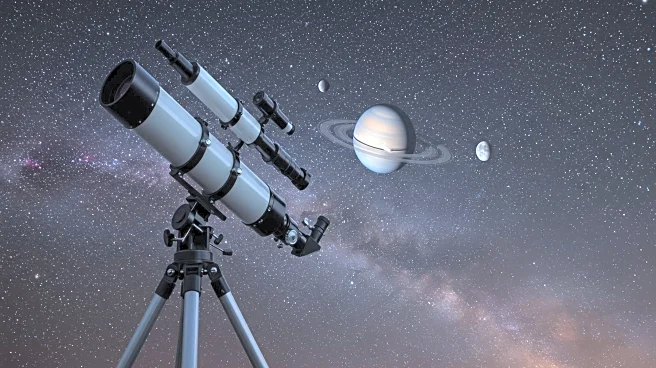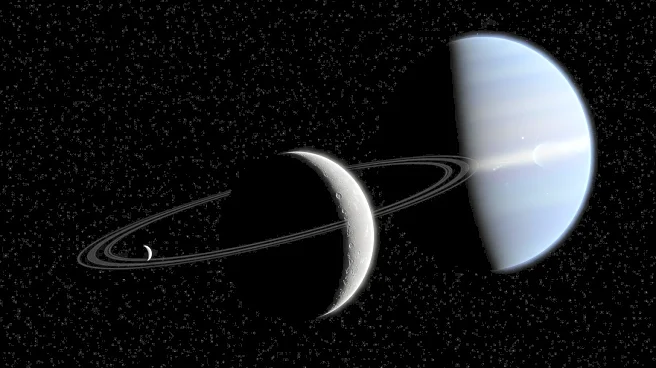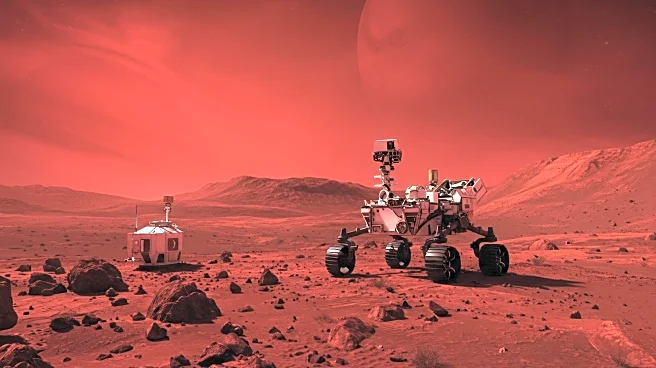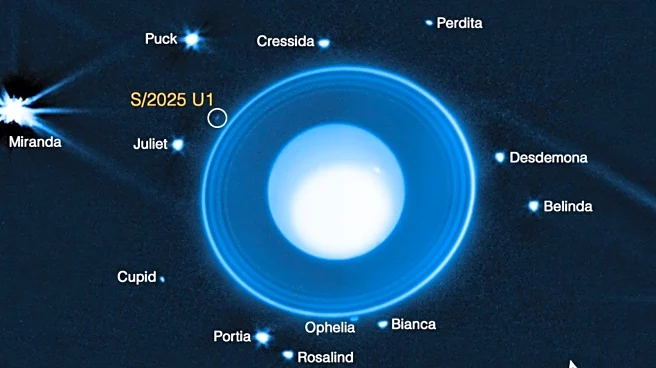Rapid Read • 8 min read
NASA's SPHEREx space observatory has reported new findings on the interstellar object 3I/ATLAS, revealing a significant cloud of carbon dioxide (CO2) surrounding it. The observations, conducted between August 8-12, 2025, showed a CO2 mass loss rate of approximately 70 kilograms per second. Interestingly, no water vapor was detected, contradicting earlier claims of water presence. The lack of a water gas coma is puzzling, as 3I/ATLAS was near the solar system's 'water ice line' during the observations. The SPHEREx images also suggest a large nucleus for 3I/ATLAS, potentially indicating a solid body with a diameter of 46 kilometers, which is significantly larger than previous interstellar comets like 2I/Borisov.
AD
The findings challenge existing theories about interstellar objects and their compositions. The absence of water vapor and the presence of a large CO2 cloud suggest that 3I/ATLAS may not be a typical water-rich comet. This discovery could have implications for our understanding of cometary bodies and their formation in the universe. The potential size of 3I/ATLAS also raises questions about the frequency and nature of such large interstellar objects, which could impact future astronomical studies and the search for extraterrestrial life. The possibility of 3I/ATLAS being a technologically designed object adds an intriguing dimension to the study of interstellar phenomena.
Further observations are anticipated as the Sun's heat may reveal more about 3I/ATLAS's composition and structure. The release of data from the Webb Space Telescope, which observed 3I/ATLAS on August 6, 2025, is eagerly awaited. These observations could provide additional insights into the object's nature and its potential technological origins. The scientific community will likely continue to monitor 3I/ATLAS closely, as its unique characteristics could offer new perspectives on interstellar objects and their interactions with the solar system.
The discovery of 3I/ATLAS's unusual characteristics may prompt a reevaluation of the criteria used to classify interstellar objects. The potential technological implications, if confirmed, could lead to broader discussions about the possibility of extraterrestrial technology and its detection. This could influence future space exploration missions and the development of new technologies for studying distant celestial bodies.
AD
More Stories You Might Enjoy
